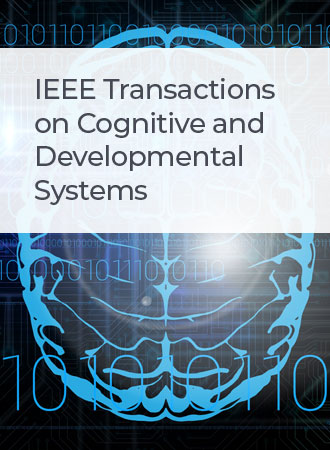基于肌电图的物理人机交互阻抗识别框架
IF 4.9
3区 计算机科学
Q1 COMPUTER SCIENCE, ARTIFICIAL INTELLIGENCE
IEEE Transactions on Cognitive and Developmental Systems
Pub Date : 2024-08-13
DOI:10.1109/TCDS.2024.3442172
引用次数: 0
摘要
在人机物理交互(pHRI)中,操作者的肌肉活动、机器人与操作者之间的阻抗和作用力等对人机交互的阻抗和作用力等影响很大。实际上,交互剖面的参数很容易测量,例如位置、速度、加速度和肌肉活动。然而,阻抗不能直接测量。在一些领域,力的信息很难被捕获,特别是在力传感器很难被安装在机器人上的地方。从这个意义上说,通过探索上述相互作用曲线之间的潜在关系,开发一种可行且简单的方法来识别阻抗参数是值得的。为此,针对稳定/不稳定pHRI,提出了一种基于不同时基权重隶属函数的广义学习系统阻抗识别框架(TWMF-BLS)。具体地说,利用混合特征估计了稳定和不稳定的pHRI的相互作用力,提出了线性权隶属函数和非线性权隶属函数。人类手臂的阻抗可以在没有生物模型或机器人模型的情况下进行估计。实验结果证明了该方法的可行性和有效性。本文章由计算机程序翻译,如有差异,请以英文原文为准。
An Impedance Recognition Framework Based on Electromyogram for Physical Human–Robot Interaction
In physical human–robot interaction (pHRI), the interaction profiles, such as impedance and interaction force are greatly influenced by the operator's muscle activities, impedance and interaction force between the robot and the operator. Actually, parameters of interaction profiles are easy to be measured, such as position, velocity, acceleration, and muscle activities. However, the impedance cannot be directly measured. In some areas, it is difficult to capture the force information, especially where the force sensor is hard to be attached on the robots. In this sense, it is worth developing a feasible and simple solution to recognize the impedance parameters by exploring the potential relationship among the above mentioned interaction profiles. To this end, a framework of impedance recognition based on different time-based weight membership functions with broad learning system (TWMF-BLS) is developed for stable/unstable pHRI. Specifically, a linear weight membership function and a nonlinear weight membership function are proposed for stable and unstable pHRI by using the hybrid features for estimating the interaction force. And then the human arm impedance can be estimated without a biological model or a robot's model. Experimental results have demonstrated the feasibility and effectiveness of the proposed approach.
求助全文
通过发布文献求助,成功后即可免费获取论文全文。
去求助
来源期刊

IEEE Transactions on Cognitive and Developmental Systems
Computer Science-Software
CiteScore
7.20
自引率
10.00%
发文量
170
期刊介绍:
The IEEE Transactions on Cognitive and Developmental Systems (TCDS) focuses on advances in the study of development and cognition in natural (humans, animals) and artificial (robots, agents) systems. It welcomes contributions from multiple related disciplines including cognitive systems, cognitive robotics, developmental and epigenetic robotics, autonomous and evolutionary robotics, social structures, multi-agent and artificial life systems, computational neuroscience, and developmental psychology. Articles on theoretical, computational, application-oriented, and experimental studies as well as reviews in these areas are considered.
 求助内容:
求助内容: 应助结果提醒方式:
应助结果提醒方式:


